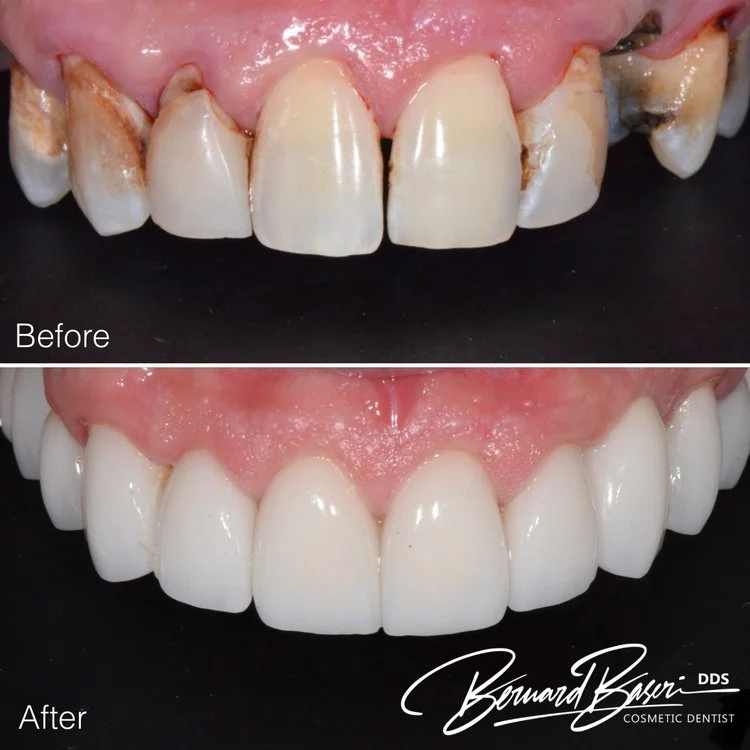Porcelain Crowns in Los Angeles & Beverly Hills
Every smile is unique in its own way. Creating a beautiful and vibrant looking smile requires certain skills and artistic ability. In many cases a porcelain crown can recreate a natural tooth and is an excellent choice when teeth are damaged due to decay, fracture or permanent stains such as tetracycline. Crowns do not replace missing teeth but restore the shape of the original tooth with better esthetic appearance.
At Smile Recreation dental office, we specialize in porcelain crowns for patients in Los Angeles, Beverly Hills, and surrounding communities. Our team of highly skilled dental lab ceramist and cosmetic dentist like Dr. Baseri offer comprehensive solutions to restore permanently stained, fractured or damaged teeth and enhance the overall appearance of your smile, utilizing high-quality porcelain crowns that provide durability and longevity.
What Are Porcelain Crowns And When Do I Need Them?
In many situations a porcelain crown is the treatment of choice for the dentist if the patient has a fractured or severely traumatized tooth, or the decay extends to a point where a filling is not an option. There are scenarios were an individual is a severe grinder or clencher. Grinding or clenching teeth usually happens during sleep and you don’t notice; it is a musculoneurological pattern. Occasionally patients that clench or grind their teeth wake up in the morning with headaches. This occurs when teeth are grinding against one another. Joints and facial muscles are stressed and as a result of fatigue the patient feels pain. When teeth are abraded or ground to a point that they are severely damaged, porcelain crowns are the treatment of choice to restore the bite and anatomy of the worn tooth. There are supplemental treatments such as wearing a night guard to prevent teeth from getting damaged.
Maintenance of a Porcelain Crown
Just like how you keep your natural teeth clean by brushing and flossing, porcelain crowns also need the same care. However, the major difference between veneers and natural teeth is the color durability. Veneers do not change color so maintaining them is very simple and easy. Professional cleaning based on your dentist’s advice is recommended for the longevity of your teeth and crowns.
Affordable Porcelain Crowns in Los Angeles & Beverly Hills
We believe everyone deserves access to top-tier dental care. That’s why we offer flexible financing and payment plans for porcelain crowns in our Los Angeles and Beverly Hills locations. Our team will work with your insurance provider to maximize your benefits whenever possible.
Book Your Consultation Today
Ready to restore your smile with a custom porcelain crown? Schedule a consultation with Smile Recreation dental office in Los Angeles or Beverly Hills today. Our experienced cosmetic dentist, Dr. Baseri is here to help you achieve a healthier, more confident smile with personalized, high-quality care. Call us at (323) 413-2903 or schedule your appointment online by clicking on the following link:

